eCommerce Outsourcing: Scale Your Online Store in 2025

Running an online store feels like juggling ten tasks at once. You’re managing inventory. Answering customer emails. Fixing website bugs. And somehow finding time to grow your business.
What if you could hand off some of these tasks to experts?
That’s exactly what eCommerce outsourcing offers. It’s a strategy that allows you to hire contractors to handle business functions like inventory management, customer service, and marketing. Instead of building an in-house team for everything, you partner with specialists who already know the game.
In this blog, we will discuss how outsourcing in eCommerce works, which tasks to delegate, and how to pick the right partner. Whether you’re a startup or an established brand, you’ll find practical steps to lighten your load and scale faster.
What Is eCommerce Outsourcing?
eCommerce outsourcing refers to delegating particular eCommerce functions to a specialized service provider.
Think of it as building a team without the overhead. When an online business hires a third-party company to manage certain tasks such as website management, customer support, inventory control, and order fulfillment, it is called eCommerce outsourcing.
Here’s a simple example. Your online clothing store grows from 50 to 500 orders monthly. Suddenly, you need warehouse space, packing staff, and shipping coordination. Instead of hiring five people and leasing a warehouse, you partner with a fulfillment company that already has infrastructure ready.
BPO companies typically serve many businesses and apply the same specialized skills across their client portfolio. This means they’ve solved problems you haven’t even encountered yet.
The beauty? You keep control of your brand and core operations. You just get expert help where you need it most.
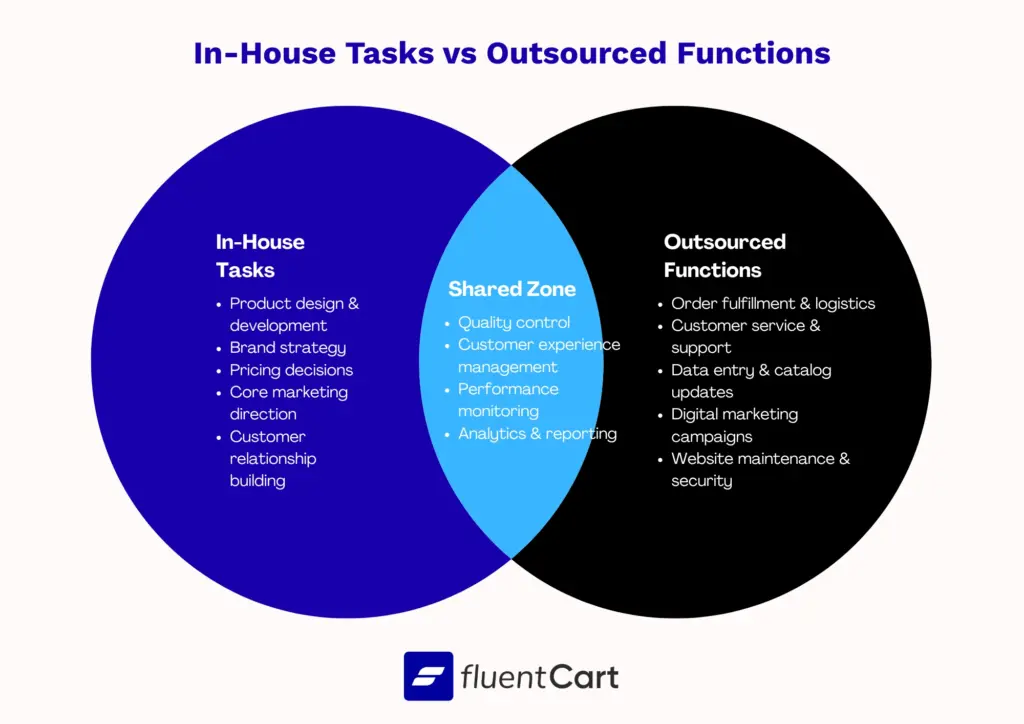
Which Tasks Can You Outsource?
Not every task belongs on your plate. Here are the most commonly outsourced functions.
1. Customer Service and Support
Customer service involves handling customer inquiries, support tickets, and returns. Outsourcing can provide 24/7 support and faster response times.
A study by Zendesk found that “60% of customers expect responses within 10 minutes.” Meeting this standard internally requires round-the-clock staffing. An outsourced team in multiple time zones solves this naturally.
2. Order Fulfillment and Logistics
Logistics and fulfillment include managing warehousing, order processing, and shipping. These tasks demand space, systems, and staff.
Third-party logistics providers (3PLs) handle everything from receiving inventory to shipping packages. They negotiate better shipping rates because they work with multiple brands. You save money and gain expertise.
3. Digital Marketing Services
Marketing includes tasks like content creation, social media management, and search engine optimization. These require specific skills that change constantly.
SEO alone involves technical optimization, content strategy, and link building. Social media needs daily management. An agency brings specialists in each area without you hiring five different people.
4. Website Development and Maintenance
Website development and maintenance involve building, managing, and updating the online store. Your site needs security updates, speed optimization, and feature additions.
According to Google, “53% of mobile users abandon sites that take over three seconds to load.” A development team ensures your site stays fast and secure.
5. Data Entry and Product Management
Product listings need accurate descriptions, images, and pricing. This work is repetitive but essential. Outsourced teams handle the entry of product details such as descriptions, images, and prices.
Why Businesses Choose Outsourcing
The benefits go beyond just saving time. Here’s what makes outsourcing attractive.
1. Cost Efficiency
Outsourcing lets you access specialized services without training employees and managing labor. This approach helps lower labor costs while maintaining high-quality output.
Building an in-house customer service team means salaries, benefits, training, office space, and management overhead. An outsourced team charges a flat rate per hour or ticket. You pay for results without the infrastructure costs.
2. Focus on Core Business
Delegating non-essential eCommerce tasks to external experts lets you concentrate on your core business functions like product development and brand building.
Think about where your unique value lives. If you’re great at designing products but struggle with tech, outsource the tech. Save your energy for what makes your business special.
3. Access to Specialized Expertise
Outsourcing offers access to a global talent pool of specialists who excel in their respective domains. Whether it’s PPC advertising or fraud prevention, these teams have seen it all.
According to Deloitte’s 2023 Global Outsourcing Survey, “70% of businesses cite access to skills as a primary reason for outsourcing.”
4. Scalability and Flexibility
Outsourcing partners can often scale to meet fluctuating consumer demands within the eCommerce industry. They can quickly adjust resources, staffing, or services during peak seasons or unexpected growth periods.
Black Friday traffic spikes won’t crash your customer service. Your outsourcing partner simply adds agents for the season.
5. Faster Time to Market
Working with specialized service providers can expedite processes such as website development and marketing campaigns. Launch products faster. Test campaigns quicker. Move at the speed your market demands.
How to Choose the Right Outsourcing Partner
The wrong partner creates more problems than solutions. Here’s how to choose wisely.
1. Define Your Needs Clearly
Begin by creating a scope of work document that outlines your business goals and specific needs. What problems are you solving? What results do you expect?
Be specific. “Handle customer emails” is vague. “Respond to all customer emails within 2 hours with a satisfaction rating above 90%” is clear.
2. Evaluate Their Expertise
Ensure that potential vendors offer expertise specific to your eCommerce platform needs. Check their portfolio. Ask for case studies. Request client references.
A company that excels in Shopify might struggle with custom platforms. Match their strengths to your needs.
3. Prioritize Data Security
Assess potential providers’ security measures, data protection protocols, and compliance with eCommerce laws. According to IBM’s Cost of a Data Breach Report 2023, “the average cost of a data breach reached $4.45 million.”
Ensure they follow standards like GDPR and use SSL certificates to encrypt data transmission. Never compromise on security to save a few dollars.
4. Check Communication Practices
Effective communication is crucial in any outsourcing relationship. Test their response times. Schedule a trial period. See how they handle questions and problems.
Time zone differences matter less than responsiveness. A team eight hours ahead that responds within an hour beats a local team that takes days.
5. Look for Proven Track Record
Research the reputation of potential outsourcing partners by looking for reviews on platforms like Clutch or GoodFirms. Real client feedback reveals more than marketing promises.
Ask specific questions. How do they handle mistakes? What happens when volume spikes? How do they train their team?
Common Challenges and How to Overcome Them
Outsourcing isn’t without hurdles. Being aware helps you prepare.
1. Maintaining Quality Control
Ensuring high-quality standards across outsourced e-commerce operations is a significant challenge. Set clear benchmarks from day one. Create quality scorecards. Review performance weekly at first, then monthly.
Use mystery shopping. Send test orders. Check how they handle difficult customers. Regular audits keep standards high.
2. Managing Communication Gaps
Language barriers or cultural differences can sometimes pose challenges. Choose partners with strong English skills if that’s your market language. Use collaboration tools like Slack or Asana to keep everyone aligned.
Schedule overlapping work hours. Even one hour of real-time communication daily prevents most issues.
3. Protecting Your Data
The protection of sensitive customer and business data is a paramount concern when outsourcing e-commerce operations. Sign NDAs before sharing anything. Limit access to only necessary systems. Use two-factor authentication everywhere.
Regular security audits aren’t optional. They’re essential insurance.
Real-World Examples (Scenarios)
Seeing how others use outsourcing makes the concept concrete.
Small Business
A handmade jewelry brand grows from 20 to 200 orders monthly. The owner outsources fulfillment to a 3PL and customer service to a virtual assistant team. This frees 30 hours weekly to focus on design and marketing. Revenue doubles within six months.
Growing Store
A mid-size electronics retailer struggles with returns management. They partner with a specialized returns processor. Customer satisfaction scores increase by 25% because returns get processed within 48 hours instead of two weeks.
Enterprise
A large fashion retailer operates in 15 countries. They outsource multilingual customer support to regional teams. Customers get help in their native language during their business hours. Support costs drop 40% compared to hiring in-house teams everywhere.
Simplify Tasks with FluentCart
Not every task in your store needs your attention. FluentCart handles the technical and operational backbone seamlessly and affordably, so outsourced teams can focus on high-value work. It manages subscriptions, licenses, physical & digital products, checkout, payments, and customer data from a single dashboard while integrating with FluentCRM, Fluent Support, FluentCommunity, and FluentAffiliate.
Outsourced teams can handle customer support with organized ticketing, order fulfillment with real-time inventory tracking, and digital marketing using CRM insights and affiliate tools.
Moreover, FluentCart supports course sales through FluentCommunity, TutorLMS, and LearnDash. Automate workflows via BitFlows or FlowMattic. This reduces manual work and errors. It processes orders 3× faster than competitors and uses 25% less server power than legacy systems. FluentCart makes outsourcing smoother, cost-efficient, and scalable.
Your teams handle people and strategy, FluentCart handles systems and data, giving your store a clear advantage in 2025.
Wrapping Up
eCommerce outsourcing turns your biggest operational headaches into someone else’s specialty. It gives you access to expertise you couldn’t afford to hire full-time. It lets you scale without the growing pains.
The key is choosing the right tasks and the right partners. Start with clear goals. Vet thoroughly. Communicate constantly. Measure everything.
Your time is your most valuable asset. Spend it building your brand and growing your business. Let specialists handle the rest.
That’s not just smart business. It’s the competitive advantage successful online stores use to pull ahead.



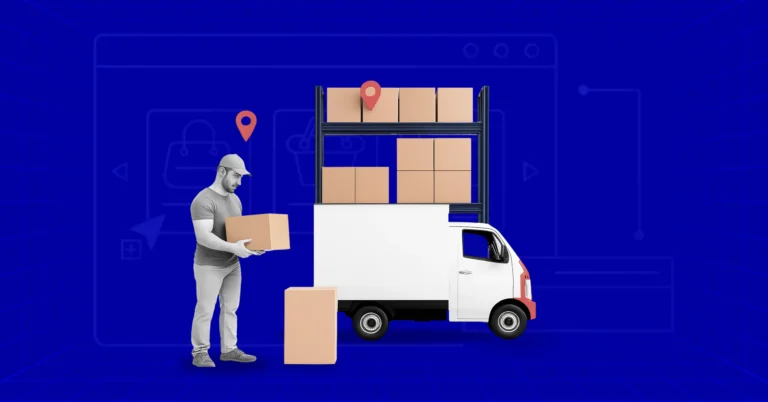

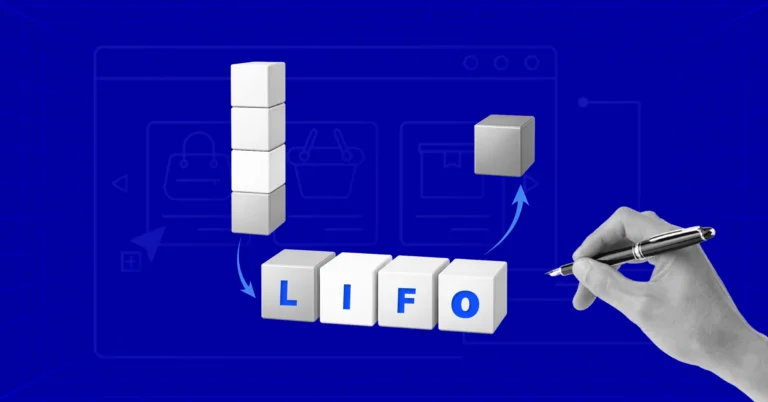

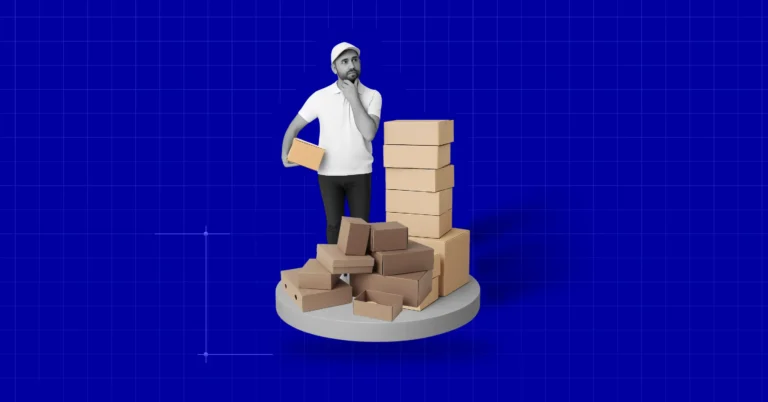


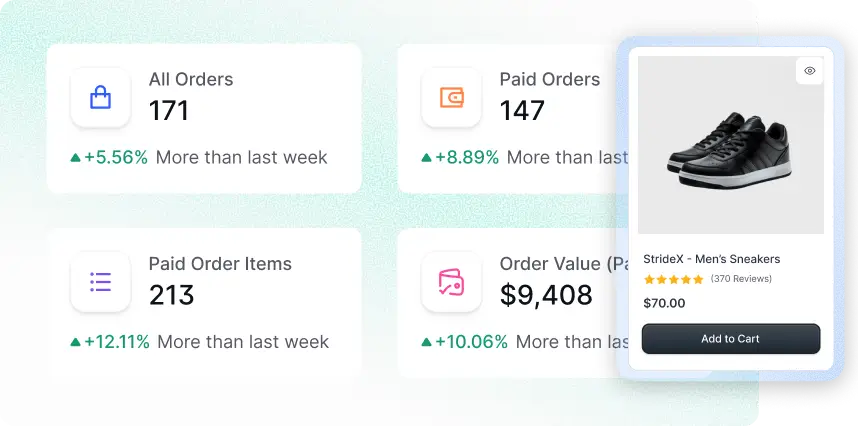


Leave a Reply